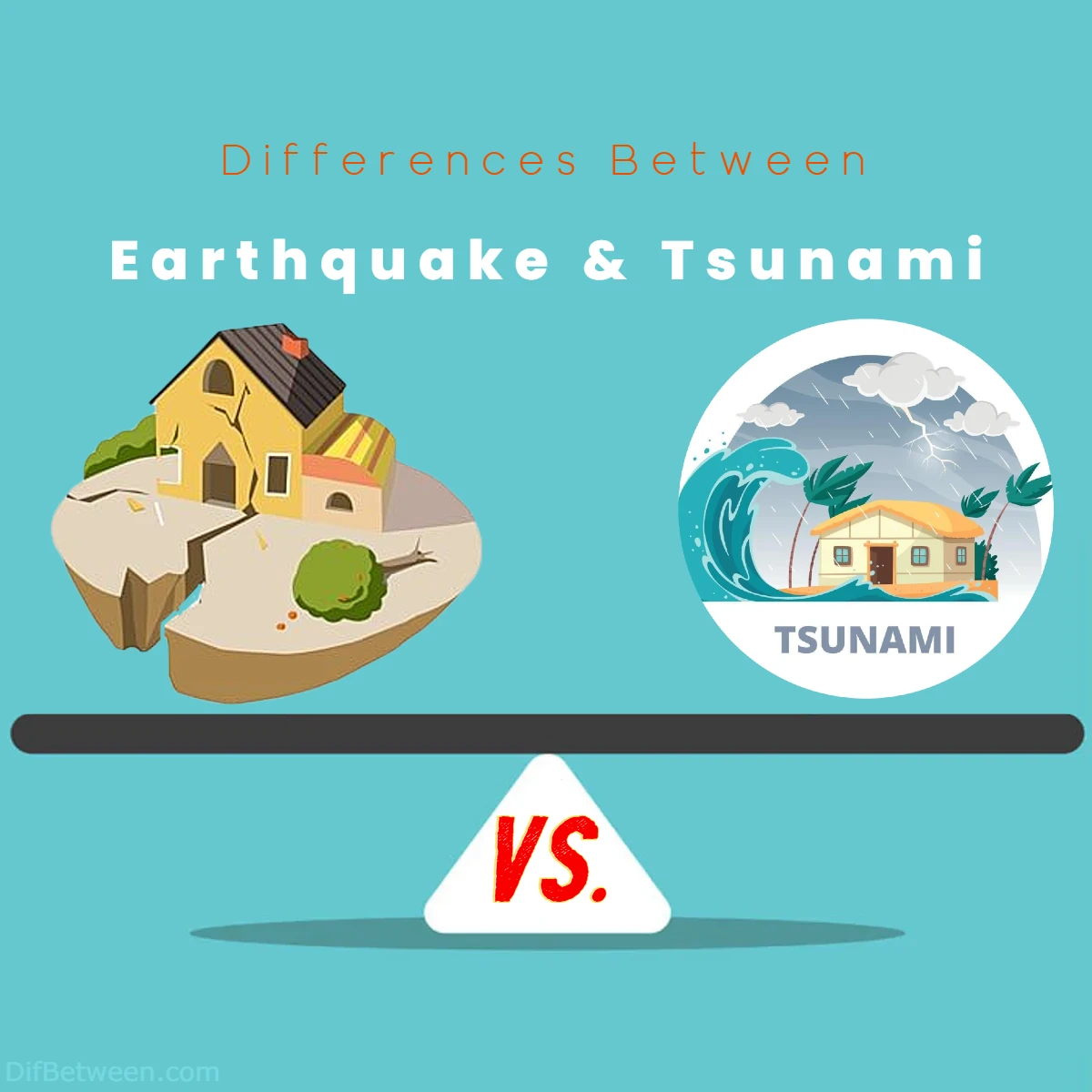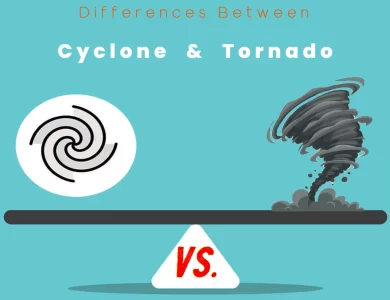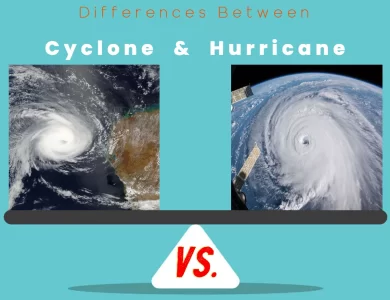
| Aspect | Earthquake | Tsunami |
|---|---|---|
| Origin and Triggers | Sudden movements in Earth’s crust | Underwater disturbances (mainly earthquakes) |
| Energy Release | Seismic waves | Oceanic waves |
| Speed and Propagation | Varies based on wave type and materials | Fast in deep ocean, slows in shallower water |
| Geographic Scope | Can occur anywhere | Primarily affects coastal regions |
| Warning Systems | Limited advance warning | Advanced warning systems for detection |
| Impact on Ecosystems | Indirect (landslides, soil liquefaction) | Direct (flooding, habitat destruction) |
| Cultural Significance | Influences myths, architectural styles | Passed down in oral traditions |
| Historical Impact | Affects cultures, leaves geological marks | Leaves geological marks, oral histories |
| Scientific Study | Seismology | Seismology, oceanography, geology |
| Preparedness and Response | Building resilience, post-event response | Evacuation plans, early warning systems |
| Societal Impact | Depends on magnitude, preparedness | Amplifies impact of earthquakes |
| Public Awareness | Increasing awareness, drills | Teaching recognition and response |
| Future Challenges | Retrofitting, urbanization | Remote warning, awareness, preparedness |
Picture this: the ground beneath our feet suddenly shaking, like a cosmic jig by the planet itself, or imagine the serene ocean suddenly transforming into a colossal watery behemoth, charging towards the shore with an almost mythical might. These are not just scenes from a Hollywood blockbuster; these are the awe-inspiring spectacles of nature.
Differences Between Earthquake and Tsunami
The main differences between an earthquake and a tsunami lie in their origin, impact, and behavior. Earthquakes result from sudden movements within the Earth’s crust, causing the ground to shake violently. Tsunamis, on the other hand, are triggered by underwater disturbances, often stemming from underwater earthquakes, which lead to massive oceanic waves. While earthquakes primarily impact structures and landscapes through ground shaking and surface ruptures, tsunamis unleash their havoc through coastal flooding and erosion. Understanding these distinctions is vital for grasping the unique dynamics of these natural phenomena.
1. Origins and Triggers
Earthquake:
An earthquake is the result of sudden, violent movements within the Earth’s crust. The Earth’s crust is not a solid, continuous structure; instead, it is divided into tectonic plates that float on the semi-fluid layer of the mantle. These plates are in constant motion due to the currents beneath them. When two tectonic plates grind against each other or collide, immense stress builds up at their boundaries. Eventually, this stress is released in the form of seismic waves, leading to an earthquake.
Earthquakes can also be triggered by volcanic activity when magma forces its way to the surface, causing the surrounding rocks to fracture. Similarly, human activities such as mining, reservoir-induced seismicity (due to the weight of water in large reservoirs), and hydraulic fracturing (fracking) can also induce earthquakes, albeit on a smaller scale.
Tsunami:
A tsunami, on the other hand, originates primarily from underwater disturbances. While earthquakes are the most common triggers of tsunamis, not all earthquakes lead to these massive waves. Tsunamis specifically arise from submarine earthquakes that occur beneath the ocean floor. When such an earthquake displaces a significant volume of water, it sets off a chain reaction that generates a series of powerful waves. These waves then propagate outward in all directions, potentially spanning entire ocean basins.
In rare cases, tsunamis can also be caused by volcanic eruptions, landslides into the sea, or even the impact of large meteorites in oceans. The common denominator in all these scenarios is the rapid displacement of water, triggering a cascade of energy that ultimately manifests as a tsunami.
2. Nature of Energy Release
Earthquake:
The energy released during an earthquake is seismic in nature. This energy travels in the form of seismic waves, which are categorized into three main types:
- Primary Waves (P-waves): These are compressional waves that push and pull the ground in the direction of their propagation. P-waves are the fastest seismic waves and can travel through both solid and liquid materials.
- Secondary Waves (S-waves): These are transverse waves that move the ground perpendicular to their direction of propagation. S-waves follow P-waves and can travel only through solid materials.
- Surface Waves: These waves travel along the Earth’s surface and have a rolling or swaying motion. They are responsible for the majority of the damage caused by earthquakes.
The energy released by an earthquake is proportional to its magnitude. The Richter scale and the moment magnitude scale (Mw) are commonly used to measure earthquake magnitude. Each whole number increase on these scales represents a tenfold increase in the amplitude of seismic waves and approximately 31.6 times more energy release.
Tsunami:
Tsunamis, on the other hand, release their energy in the form of massive oceanic waves. The energy generated by the underwater disturbance—be it an earthquake or another trigger—displaces a vast volume of water from its equilibrium position. This energy then transforms into kinetic energy, causing the water to propagate outward in the form of waves. Unlike regular ocean waves that are generated by the wind’s energy, tsunamis have much longer wavelengths and can travel across entire ocean basins.
It’s important to note that the energy of a tsunami is not confined to the water’s surface. As the waves approach shallower coastal waters, they undergo a process called “wave shoaling,” which causes the waves to slow down and increase in height. This is why tsunamis can unleash their devastating impact when they reach the shore.
3. Impacts and Damage
Earthquake:
The impact of an earthquake is strongly influenced by several factors, including its magnitude, depth, distance from the epicenter, and the local geological conditions. Earthquakes can lead to a range of destructive effects:
- Ground Shaking: The violent shaking of the ground can cause buildings, bridges, and other structures to collapse. It can also trigger landslides and rockfalls in hilly or mountainous areas.
- Surface Ruptures: In some cases, the ground itself can crack and rupture along the fault line, causing visible displacement and damaging infrastructure.
- Tsunamis: As mentioned earlier, certain earthquakes can trigger tsunamis, which inundate coastal areas with powerful waves that can erode coastlines and destroy buildings and infrastructure.
The severity of damage can vary widely, from minor tremors that are barely felt to catastrophic events that cause widespread devastation and loss of life.
Tsunami:
Tsunamis are often associated with the inundation of coastal areas and can cause widespread destruction. The impacts of tsunamis include:
- Flooding: The most immediate and destructive impact of a tsunami is its flooding of coastal areas. The massive waves can carry debris, sediment, and even entire structures inland, wreaking havoc in their path.
- Erosion: Tsunamis can erode coastlines, stripping away beaches, vegetation, and even altering the shape of landforms.
- Saline Contamination: The saltwater brought in by tsunamis can contaminate freshwater sources, affecting local ecosystems and drinking water supplies.
- Long-Lasting Effects: The aftermath of a tsunami can leave lasting scars on communities, from displacement of residents to economic hardship and the challenges of rebuilding infrastructure.
4. Preparedness and Mitigation
Earthquake:
Given that earthquakes strike suddenly and without warning, preparedness and mitigation efforts largely focus on building structures that can withstand the forces generated by these seismic events. Engineers and architects design buildings using seismic-resistant techniques, such as flexible materials and base isolators, which allow structures to absorb and dissipate the energy of an earthquake.
Seismic monitoring systems help detect earthquakes as they occur, providing a few precious moments for people to take cover or evacuate buildings. Public education campaigns also play a crucial role in raising awareness about earthquake safety and preparedness measures.
Tsunami:
Unlike earthquakes, tsunamis can be detected and their potential impact predicted, thanks to advances in oceanic and seismic monitoring systems. The Pacific Tsunami Warning Center (PTWC), for instance, tracks seismic activity and oceanic conditions that could lead to tsunamis. When a potentially tsunamigenic earthquake occurs, the center issues warnings to authorities and the public, allowing coastal communities to evacuate low-lying areas.
Coastal engineering and land-use planning are also essential for tsunami preparedness. Constructing seawalls, elevated evacuation routes, and designated safe zones can significantly reduce the impact of a tsunami on coastal populations.
5. Geographic Scope and Reach
Earthquake:
Earthquakes can occur in various regions around the world, regardless of their proximity to coastlines. They are not confined to specific geographic locations and can happen on land or beneath the ocean floor. However, their impact on coastal areas is often linked to the potential for triggering tsunamis. While coastal earthquakes can lead to tsunamis, inland earthquakes can cause widespread damage through ground shaking, landslides, and structural collapses.
Tsunami:
Tsunamis are most closely associated with coastal regions and the adjacent oceanic expanses. They primarily affect areas with direct access to the open ocean, as the waves generated by underwater disturbances travel across ocean basins. Coastal communities and regions situated along tectonic plate boundaries are more vulnerable to tsunamis due to their proximity to potential earthquake sources. While tsunamis are not exclusive to coastal areas, their impact is most pronounced in these regions.
6. Warning Systems and Response
Earthquake:
As earthquakes strike suddenly and without immediate warning signs, effective response systems often focus on post-event actions. Search and rescue operations, medical assistance, and providing humanitarian aid are crucial components of earthquake response. In some cases, communities have established local early warning systems that rely on rapidly detecting the initial, less destructive seismic waves (P-waves) to trigger alerts before the more damaging waves (S-waves and surface waves) arrive. However, these systems offer only a short lead time for preparation.
Tsunami:
Tsunami warning systems have evolved significantly to provide advance notice and reduce casualties. The Pacific Tsunami Warning Center, along with other regional centers, monitors seismic activity and oceanic conditions to detect potential tsunamis. When a significant earthquake occurs, these centers issue alerts to coastal communities, allowing them to initiate evacuations and take other precautionary measures. The advanced warning time can range from minutes to several hours, depending on the distance of the affected area from the earthquake’s epicenter.
7. Historical Impact and Cultural Significance
Earthquake:
Throughout history, earthquakes have left their mark on cultures and societies around the world. Earthquakes are often associated with myths, legends, and religious beliefs. In some cultures, earthquakes are interpreted as expressions of divine power or anger. They have also played a role in shaping architectural styles, influencing the design of structures to withstand seismic events. For instance, in earthquake-prone regions like Japan, traditional wooden structures are designed to sway with the ground motion rather than resisting it, thus reducing damage.
Tsunami:
Tsunamis have had a profound impact on coastal communities throughout history, especially in regions bordering the Pacific Ocean. Indigenous knowledge and oral traditions often include accounts of past tsunamis, serving as valuable sources of information for understanding their occurrence and behavior. In some cases, tsunami myths have been passed down through generations, imparting vital survival knowledge. Coastal communities have also constructed tsunami stones, markers placed in high-risk areas to commemorate past events and provide guidance on safe evacuation zones.
8. Scientific Study and Research
Earthquake:
The study of earthquakes falls within the realm of seismology, a branch of geophysics that focuses on the behavior of seismic waves and the Earth’s internal structure. Seismologists use a network of seismometers to monitor and record ground motions caused by earthquakes. These observations contribute to a better understanding of earthquake behavior, fault mechanisms, and potential hazard assessment.
Tsunami:
Tsunami research spans multiple scientific disciplines, including seismology, oceanography, and geology. Scientists analyze data from seismometers, ocean buoys, and coastal tide gauges to understand the propagation, speed, and amplitude of tsunamis. Additionally, geological studies help identify prehistoric tsunamis by studying sediment layers and geological formations. This multidisciplinary approach enhances our ability to model and predict tsunami behavior and impacts.
9. Environmental and Ecological Effects
Earthquake:
While earthquakes themselves don’t necessarily cause direct ecological impacts, they can indirectly influence ecosystems. Seismic activity can trigger landslides, which may disrupt habitats and alter landscapes. In some cases, earthquakes can lead to soil liquefaction, where waterlogged soil temporarily loses its strength and behaves like a liquid. This phenomenon can cause infrastructure damage and change the topography of an area.
Tsunami:
Tsunamis have more direct and immediate ecological impacts due to their inundation of coastal environments. The force of the waves can uproot vegetation, destroy habitats, and displace marine organisms. Coastal wetlands, mangroves, and estuaries are particularly vulnerable to tsunamis, as these ecosystems provide natural buffers against wave energy. The erosion caused by tsunamis can also lead to changes in sediment distribution and affect marine life.
10. Public Awareness and Education
Earthquake:
Public awareness of earthquake preparedness has grown over the years, driven by historical events and educational campaigns. Communities located in seismically active areas often conduct drills, develop emergency plans, and provide information on constructing earthquake-resistant structures. The goal is to equip individuals with the knowledge and skills needed to stay safe during and after an earthquake.
Tsunami:
Tsunami preparedness has become increasingly emphasized, especially in regions prone to both earthquakes and tsunamis. Educational initiatives focus on teaching people how to recognize natural signs of tsunamis, interpret official alerts, and follow evacuation procedures. Coastal communities have designated safe zones, escape routes, and vertical evacuation structures to ensure that residents have the means to reach higher ground in the event of a tsunami.
11. Societal Impact and Recovery
Earthquake:
The impact of earthquakes on society can vary greatly depending on the magnitude of the event, the population density of the affected area, and the level of preparedness. Large earthquakes can lead to significant loss of life, displacement of communities, and long-term economic consequences. Recovery efforts involve rebuilding infrastructure, restoring essential services, and providing psychosocial support to affected populations.
Tsunami:
Tsunamis often amplify the societal impact of earthquakes due to the sudden and overwhelming flooding they cause. Coastal towns and cities can experience extensive destruction, including damage to critical facilities like hospitals and transportation networks. Recovery from tsunamis involves not only rebuilding physical infrastructure but also addressing the emotional trauma and displacement experienced by survivors.
12. Future Challenges and Considerations
Earthquake:
As urban populations continue to grow, the challenge of retrofitting existing structures to withstand earthquakes becomes increasingly important. Rapid urbanization can lead to informal settlements and inadequate housing, both of which are more vulnerable to seismic events. Balancing economic development with seismic resilience is a complex challenge that requires collaboration between engineers, policymakers, and communities.
Tsunami:
The increasing frequency of mega-earthquakes and the potential for more devastating tsunamis highlight the need for improved preparedness and response. Ensuring that warning systems are accessible and effective, especially in remote and marginalized coastal areas, remains a challenge. Additionally, raising public awareness about tsunamis and the appropriate response measures is crucial to minimizing casualties and damage.
FAQs
Earthquakes are caused by sudden movements along tectonic plate boundaries, resulting in the release of seismic energy. Tsunamis, on the other hand, are primarily triggered by underwater disturbances such as submarine earthquakes, volcanic eruptions, or landslides into the ocean.
Earthquakes release energy in the form of seismic waves that propagate through the Earth’s crust. Tsunamis, however, release energy in the form of massive oceanic waves that travel across ocean basins due to the displacement of water by underwater disturbances.
Yes, certain earthquakes, particularly those occurring beneath the ocean floor, can trigger tsunamis. These earthquakes displace a significant volume of water, setting off a chain reaction that generates powerful waves.
Seismic waves from earthquakes travel at varying speeds depending on the type of wave and materials they encounter. Tsunami waves are incredibly fast in deep ocean waters, reaching speeds of hundreds of kilometers per hour, but they slow down as they approach shallower coastal waters.
Earthquakes can lead to ground shaking, structural damage, and landslides, impacting both coastal and inland areas. Tsunamis, on the other hand, cause flooding, erosion, and destruction primarily in coastal regions due to their immense wave energy.
Earthquakes often strike suddenly without immediate warning, but seismic monitoring systems can provide a few moments of advance notice. Tsunamis have advanced warning systems in place that use oceanic and seismic data to predict their occurrence and issue alerts to coastal communities.
Earthquakes can indirectly impact ecosystems through events like landslides and soil liquefaction. Tsunamis have more direct ecological effects due to flooding and habitat destruction, particularly in coastal wetlands and marine environments.
For earthquakes, individuals can educate themselves about safe behaviors during ground shaking and participate in drills. For tsunamis, understanding evacuation plans, recognizing natural signs, and heeding official alerts are crucial steps for preparedness.
Earthquakes have often been associated with myths and religious beliefs in various cultures. Tsunamis have left their mark on coastal communities’ oral histories and have influenced indigenous knowledge, including survival strategies.
Understanding the differences between earthquakes and tsunamis is essential for promoting public safety, advancing scientific research, and developing effective preparedness strategies. This knowledge empowers individuals and communities to navigate and mitigate the impacts of these powerful natural phenomena.
Read More:
Contents
- Differences Between Earthquake and Tsunami
- 1. Origins and Triggers
- 2. Nature of Energy Release
- 3. Impacts and Damage
- 4. Preparedness and Mitigation
- 5. Geographic Scope and Reach
- 6. Warning Systems and Response
- 7. Historical Impact and Cultural Significance
- 8. Scientific Study and Research
- 9. Environmental and Ecological Effects
- 10. Public Awareness and Education
- 11. Societal Impact and Recovery
- 12. Future Challenges and Considerations
- FAQs






